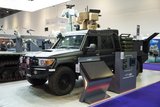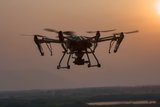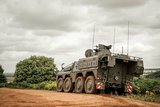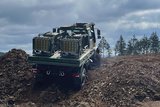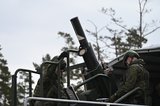‘A true force multiplier’ – where AI can make the most impact in defence
Artificial intelligence (AI) is a crucial enabler in today’s battlespace. With the right approach, the technology can enhance human capabilities, improving everything from surveillance to combat-effectiveness, says Ravinder Singh, Group Chief Operating Officer (Tech & Innovation) and President, Defence & Public Security at ST Engineering.
ST Engineering is a global technology, defence and engineering group based in Singapore, and the company’s long history and experience in the city-state give it a crucial insight into the opportunities presented by AI, says Ravinder – and the dangers of being left behind.
‘As Singapore is a relatively small country with limited resources, including manpower for the armed forces, leveraging technology like AI is crucial,’ he explained. ‘It allows our armed forces to do more with less, offload low-value work, increase operational efficiency, reduce costs and improve the safety of our soldiers. AI improves combat effectiveness and lethality and is a true force multiplier.’
ST Engineering’s philosophy is that AI should enhance – not replace – human performance, said Ravinder. In the high-tech and demanding defence environment, it is a crucial enabler for human capabilities.
‘AI augments decision-making processes where speed and accuracy are critical. This integration of AI helps militaries adapt to the evolving demands of modern combat and maintain a strategic edge.’
When routine tasks are automated, personnel can focus on more critical priorities and events, reducing workload and boosting efficiency. As one example, in the field of coastal surveillance, AI can handle initial object recognition, alerting operators only to unfamiliar or suspicious contacts. This enables navies to monitor larger areas more effectively.
‘Ultimately, AI assists personnel in decision-making, leveraging its data-processing capabilities, while humans provide the nuanced judgment needed in complex situations,’ Ravinder reiterated.
Autonomous advantage
ST Engineering is working to integrate AI across its defence technology portfolio. Ravinder pointed to the company’s work on autonomous systems, with the company seeing great potential for AI in manned-unmanned teaming.
‘AI-driven autonomous vehicles, robots and drones can be employed for a variety of critical tasks, including reconnaissance, logistics and combat operations,’ he said. ‘By seamlessly integrating these technologies, military operations can achieve greater lethality, precision and effectiveness.’
Current unmanned systems – such as UGVs, USVs, drones and precision munitions – already incorporate AI, Ravinder noted. In fact, even total autonomy is feasible in structured environments with predictable conditions and GPS availability.
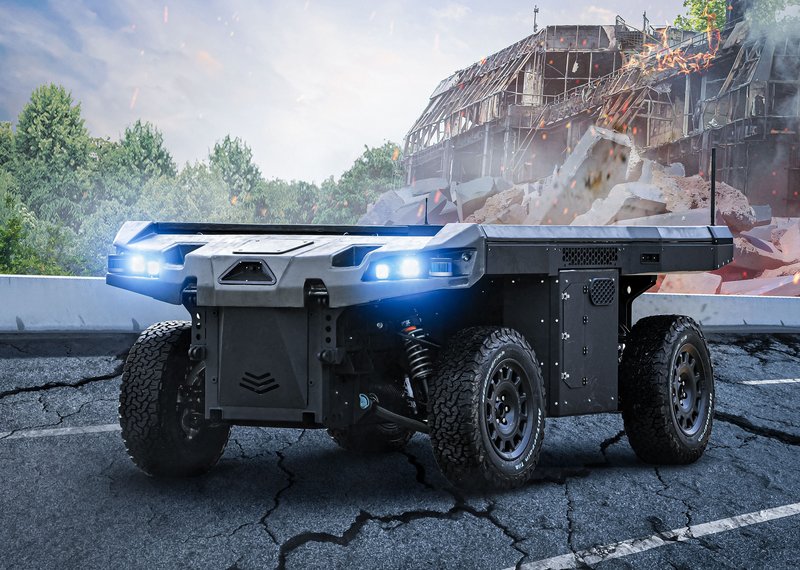
Above: TAURUS Multi-role Unmanned Ground Vehicle (UGV) with regenerative charging on the move. (Source: ST Engineering)
However, comprehensive updates to the system safety requirements for AI in MIL STD 882 will take time, so a ‘man in the loop’ will still be needed for final assurance and control. ‘Achieving full autonomy will depend on several key advancements, including improved transparency in AI decision-making, enabling AI to adapt to new environments and tasks with minimal retraining and creating seamless human-AI interfaces,’ Ravinder added.
ST Engineering is taking a proactive role in building the AI tools needed to enhance these capabilities. For instance, its Merlin solution facilitates human-AI interaction, while its AGIL® Trust ensures decisions are validated through comprehensive detection of misinformation.
‘We believe total autonomy is achievable, provided that the right AI tools are implemented and regulated to safeguard against unintended or malicious behaviour,’ Ravinder noted.
ST Engineering has integrated advanced AI algorithms to improve coordination between manned and unmanned systems, he explained, pointing to the company’s all-in-one AUTONOMAST™ technology, which transforms both new and existing vessels into USVs by utilising AI to enable autonomous operations. These can take on mundane, manpower-intensive missions, thus minimising safety risks and eliminating human exposure to danger.
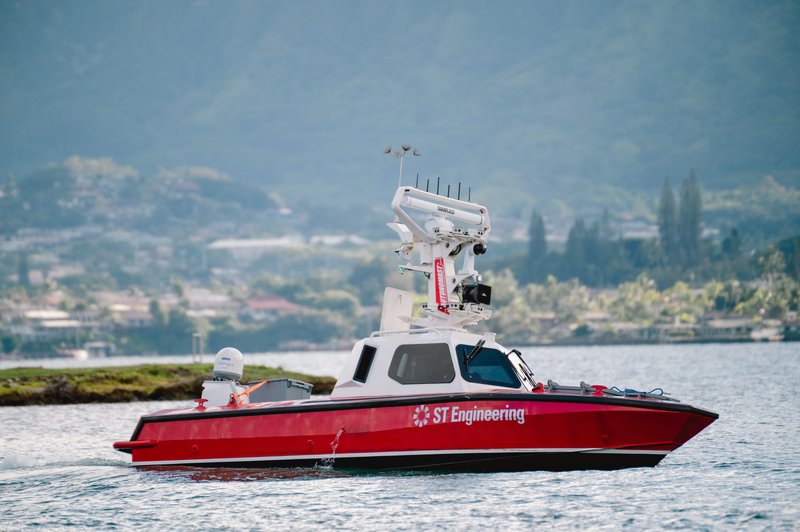
Above: Unmanned Surface Vessel (USV) powered by AUTONOMAST™ with AI-enabled advanced navigation software. (Source: ST Engineering)
‘Typical applications include maritime security, mine countermeasures and search and rescue operations. AI-powered autonomy also reduces the cognitive load on USV operators, allowing them to concentrate more effectively on their missions.’
ISR and decision support
There are a range of other areas where AI can support militaries. Ravinder highlighted the technology’s growing capabilities in ISR, where it can enhance data processing and analysis, boosting situational awareness and decision-making capabilities. This could include using AI to enhance video image quality or improve the performance of object detection systems.
Ravinder pointed to ST Engineering’s AGIL® Vision video analytics solution, which harnesses the power of generative AI and advanced reasoning techniques to enhance video search and content retrieval capabilities. It uses a ‘zero-shot’ learning model, meaning the AI can detect even previously unseen objects, ‘improving the accuracy of new target detection and reducing human errors in judgement’.
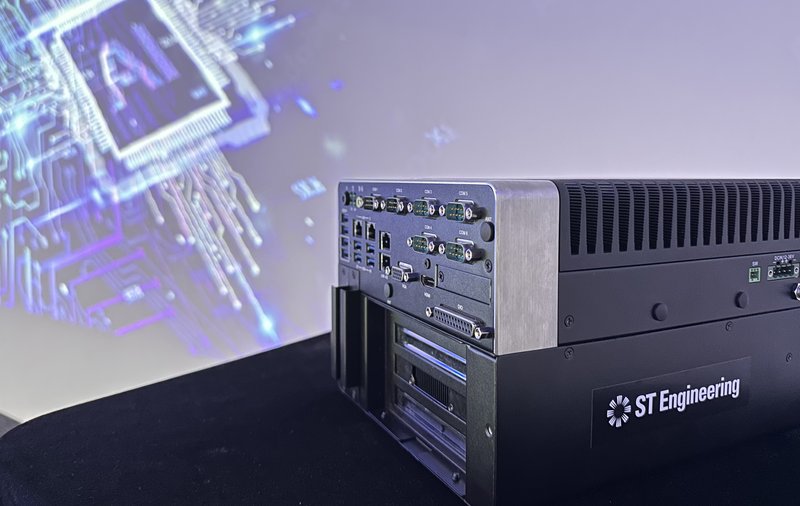
Above: AGIL® Vision advanced video intelligence solution leveraging Generative AI for rapid content search and retrieval. (Source: ST Engineering)
With AGIL® Vision, command headquarters can quickly issue ‘watchlist’ terms or scenarios to tactical field sensors, transforming these nodes into intelligent front-line agents that can deliver actionable insights in real time, Ravinder said. ‘Operators can make faster, more informed decisions, bridging the gap between human expertise and AI’s ability to process vast amounts of data efficiently.’
Many other areas of military focus will benefit from AI, Ravinder notes. These could include decision support, with AI empowering commanders to make faster, more accurate decisions by analysing data and delivering actionable insights expeditiously.
It can also underpin equipment readiness: AI revolutionises maintenance by predicting and preventing potential component failures, ‘ensuring peak operational readiness’, said Ravinder.
Commercial benefits
AI is developing at pace in the commercial world, and by leveraging this technology, the defence sector can tap cost efficiencies, while also ensuring rapid deployment and access to a larger innovation pool, Ravinder said. However, there are challenges in security, customisation and compliance.
Mil-spec systems, on the other hand, offer enhanced security and customisation, but often suffer from longer development times, higher costs and greater resource demands.
ST Engineering believes in a hybrid approach, emphasised Ravinder, ‘balancing cost, efficiency and functionality while ensuring compliance to defence standards. Commercial AI can be utilised where suitable, while custom solutions can address specific military needs or security requirements.’
The company’s aim has always been to design defence systems with modularity, scalability and interoperability in mind. Ravinder pointed to the Integrated Battle Management System (iBMS), a command and control (C2) software solution for domestic and international military customers. A notable feature of iBMS is its seamless integration with commercial AI engines, he said, allowing speech-to-text, advanced reasoning, information fusion and decision support with minimal configuration. ‘This enables us to leverage commercial AI while meeting defence-specific needs.’
Overcoming obstacles
Of course, AI brings challenges, but Ravinder is confident ST Engineering can meet them head on. For instance, he underlined the need to apply stringent cybersecurity measures to AI applications and their large language models (LLMs).
‘Our AI and Cybersecurity Research Centres are focusing on robust techniques to protect models from prompt injection, data poisoning and other attacks,’ he said. ‘We are also enhancing AI detection capabilities for operational technology environments and have successfully trialled these with critical information infrastructures.’
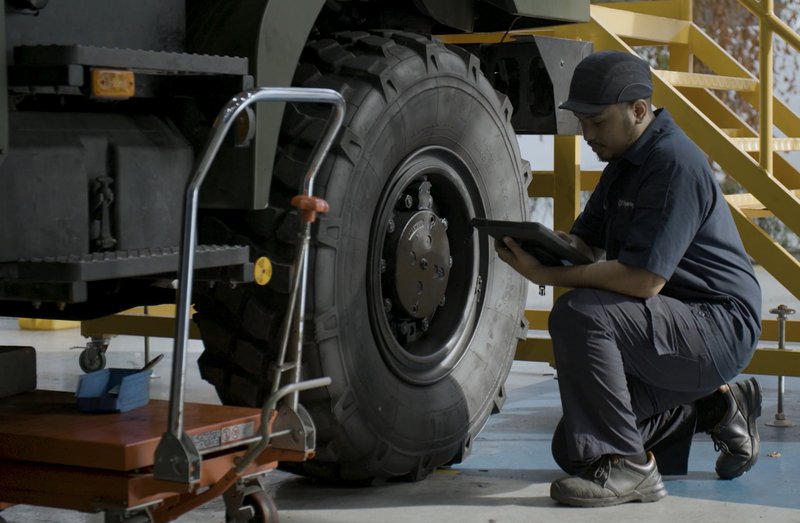
Above: Leveraging AI and predictive analytics in Maintenance, Repair and Overhaul (MRO) for greater operational readiness. (Source: ST Engineering)
Another potential challenge centres on the legacy equipment that militaries use – the benefits of AI will not be felt in all systems at the same time. While it is possible to integrate the technology onto existing platforms, its effectiveness depends on the system’s capacity to support data flow for AI applications, explained Ravinder.
‘Often, upgrading is necessary to meet AI demands, making new builds or significant overhauls a more efficient approach for maximising AI’s potential.’
Still, this challenge can be addressed over time through mid-life upgrades or replacement equipment, Ravinder said. ‘These systems need substantial data infrastructure, including hardware and firmware, for AI training and operation. This marks a significant shift from traditional, non-data-driven systems.’
AI can be a controversial subject. For Ravinder, transparency is crucial to build trust in the technology, and he stressed the need to provide clear explanations of how AI systems function, including their limitations and decision-making processes.
‘With our military customers, we engage collaboratively to demonstrate how our AI-enabled systems enhance operations. This hands-on approach not only showcases the technology, but also highlights its impact on mission effectiveness,’ he said, adding that ST Engineering provides user-friendly feedback to address any concerns and emphasises ethical considerations.
‘We address concerns about data privacy, bias and fairness up front, which helps build trust.’
Future focus
The next generation of AI-enabled systems will likely be capable of enhanced human-machine understanding and interaction, said Ravinder. As LLMs improve, AI will better process natural language, he predicted, including nuanced contexts and emotions, and become increasingly human-like in both IQ and EQ, as seen in ChatGPT 4.0.
What will the future look like for AI in defence?
Ravinder sees six key focus areas:
Enhancing decision-making through advanced analytics
Building more capable autonomous systems to perform complex tasks with minimal human intervention
Improving defence mechanisms against cyberattacks and ensuring secure communication channels
Boosting threat detection and situational awareness
Enabling seamless human-machine collaboration
Enhancing military training and simulation environments
We are likely to see growing personalisation, Ravinder added: ‘User preferences and behaviours will also be more deeply analysed, leading to more tailored experiences with recommendations and interactions catered to individual needs.’
For ST Engineering, such innovation builds on the company’s user-centred design philosophy across its defence solutions.
‘For instance, in Singapore we align user interfaces with familiar computer and mobile game design and interfaces for our young conscript soldiers,’ he explained. ‘Enhanced by AI, this personalisation will become even more precise and effective.’
More from Industry Spotlights
-
![De-Risking the Future: Manufacturing Certainty for Unmanned Systems]()
De-Risking the Future: Manufacturing Certainty for Unmanned Systems
How strategic manufacturing partnership solves the industrialisation triad — Scale, Compliance and Cost — for hyper-growth defence tech innovators.
-
![Battlefield mobility, made in the UK]()
Battlefield mobility, made in the UK
How does Britain ensure that we can preserve the lives of our soldiers and allies – now and in the future – with homegrown innovation and resilient domestic manufacturing? At Pearson Engineering, we are proud to be a central part of the answer to this increasingly important question.
-
![Strengthening Baltic defence capabilities]()
Strengthening Baltic defence capabilities
How Latvia is bolstering its territorial defences, industrial capacity and international cooperation with Dynamit Nobel Defence’s SKORPION2 Remote Mining System.
-
![Barco’s vision to trust: from past to future]()
Barco’s vision to trust: from past to future
Barco’s story is one of constant evolution enabling more immersive, reliable, and future-ready training experiences.
-
![How are next-generation ejection seats helping pilots when they need it most?]()
How are next-generation ejection seats helping pilots when they need it most?
The ACES 5 ejection seat from RTX’s Collins Aerospace introduces new, innovative and patented technologies to help save lives.
-
How Patria TREMOS redefines battlefield mobility
The war in Ukraine has made it clear: the battlefield waits for no one. Military operations now take place in fast-paced environments, and speed is not just about the fight itself – it is about the entire ecosystem of warfare.









